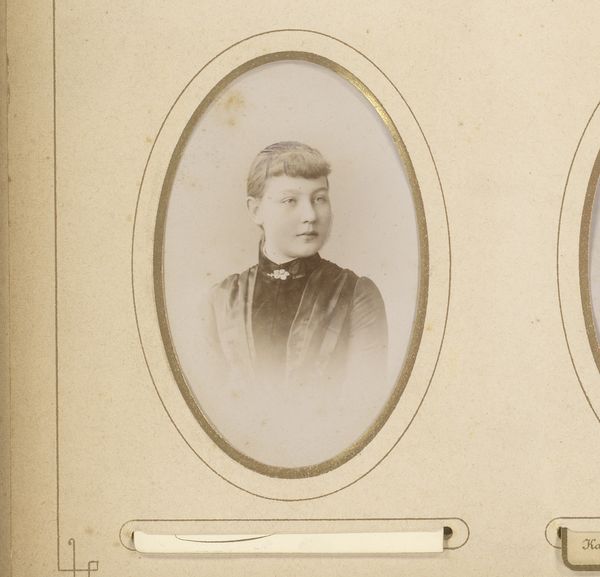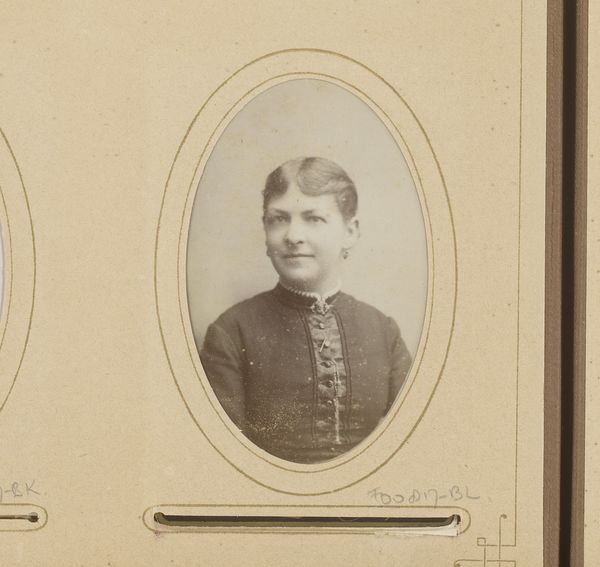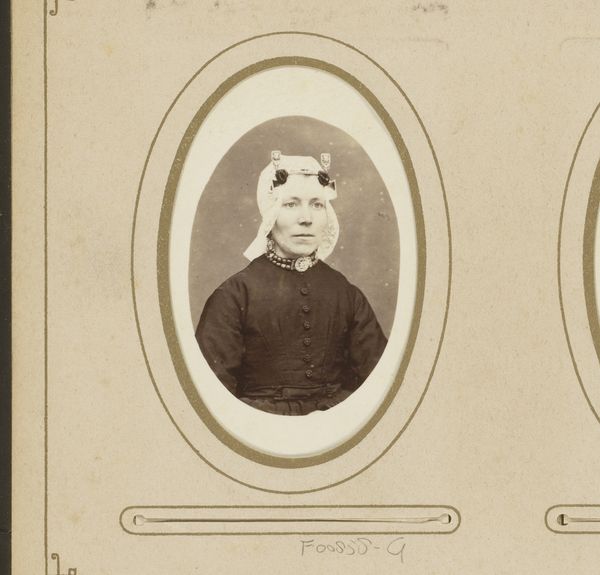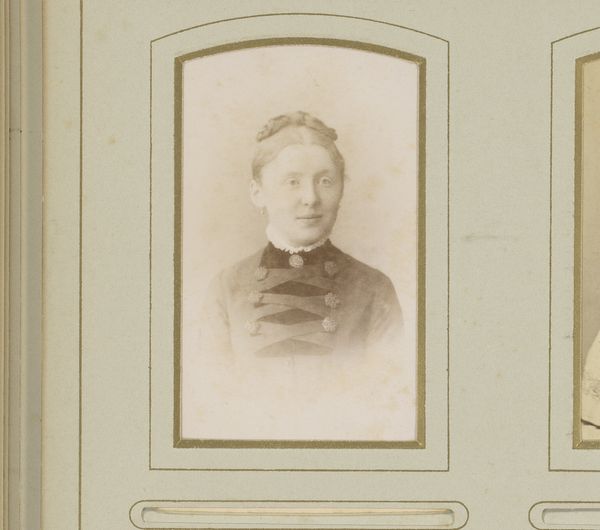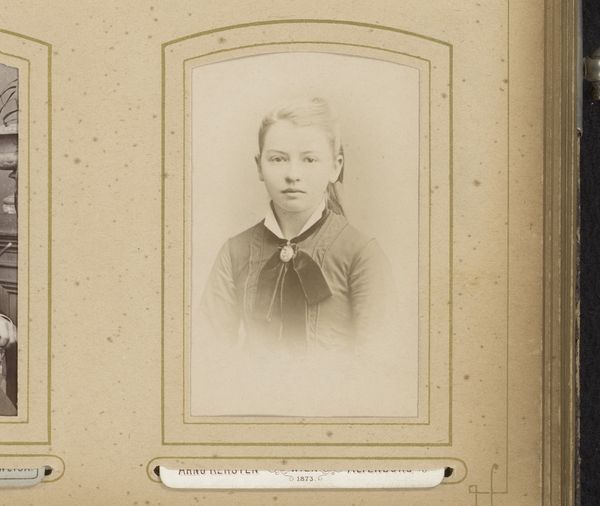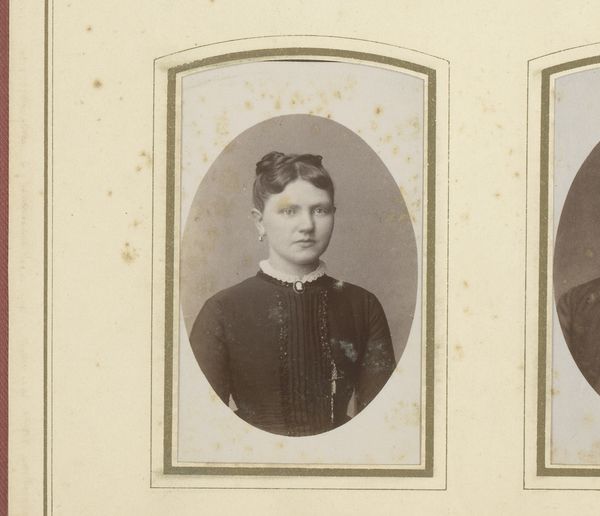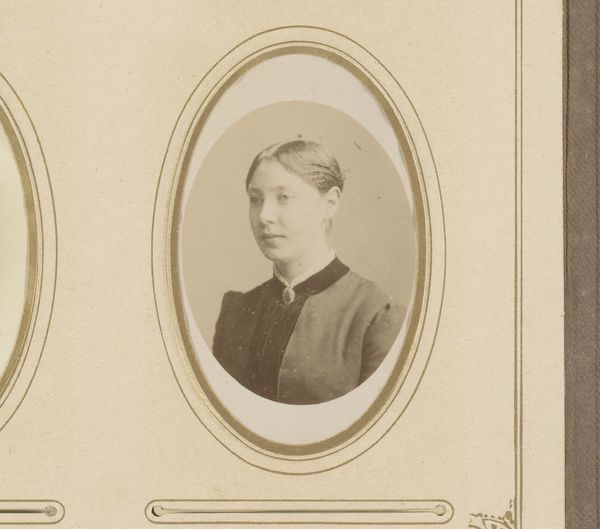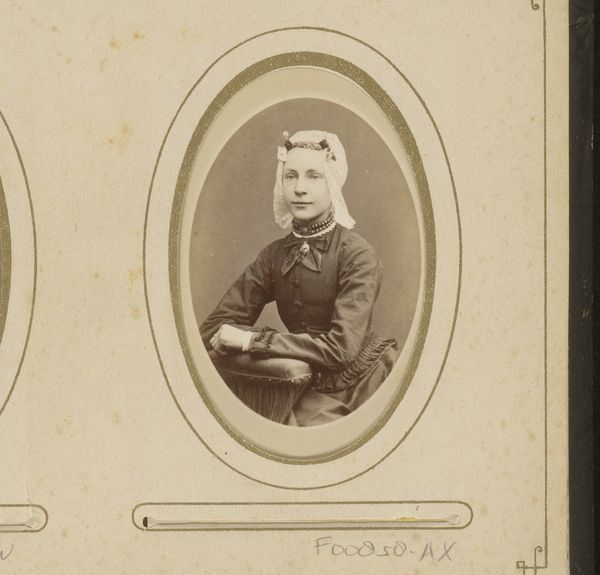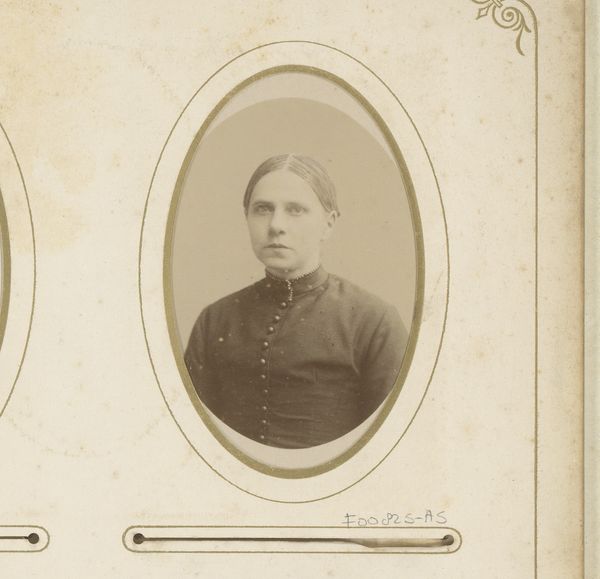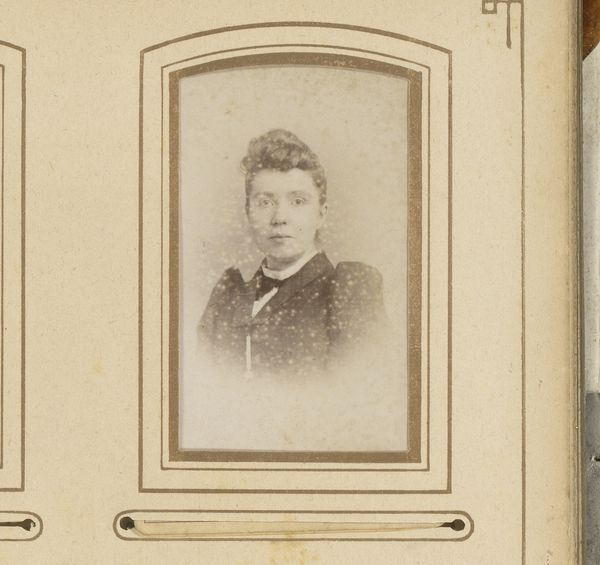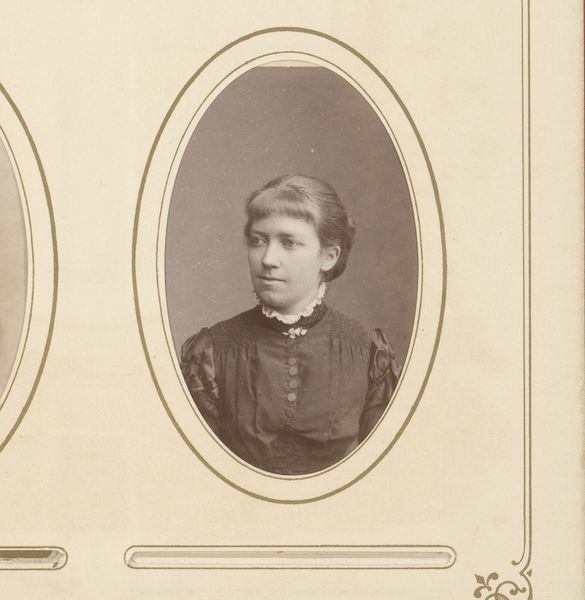
photography
#
photography
#
19th century
#
realism
Dimensions: height 82 mm, width 51 mm
Copyright: Rijks Museum: Open Domain
Curator: This is a photographic portrait, titled "Portret van een vrouw met muts, gelijkend op Friese kap"—or "Portrait of a woman with a bonnet, resembling a Frisian cap." The work comes to us from C. van der Aa & J. Chrispijn, and dates from around 1884 to 1895. Editor: What strikes me first is its starkness. There’s a gravity to her expression, a simplicity in the framing and the tones. It speaks to a particular austerity. Curator: Indeed. Considering its historical context, this realism captures an essence of 19th-century Dutch society. The woman's attire, particularly that Frisian cap, points to specific regional and cultural identities. It’s crucial to understand this photograph as more than just an image, but as a document of its time, reflecting social norms and perhaps even class distinctions. The cultural importance of headdresses! It could be an assertion of womanhood within certain cultural boundaries, a way of life being guarded against erasure through visibility in art and photography. Editor: Absolutely. It prompts reflection on the societal expectations imposed upon women and how they chose to express themselves—or were permitted to. The sternness we perceive might be less about the woman herself and more about the constraints placed upon her. This invites broader dialogues around gender and the limitations imposed on marginalized bodies and self-representation. What sort of cultural value might a picture such as this offer in terms of the representation of marginalized or traditionally underrepresented individuals or people groups? Curator: A vital point! Looking at how museums have historically curated these images is important, too. Who has been given space, whose stories told? Often, it's the powerful who commission portraits, reinforcing their dominance. In contrast, this seems less staged, more…genuine. Yet, the camera itself wielded power; selecting what—and whom—to immortalize. It raises crucial questions of representation and whose version of reality ends up being archived and presented. Editor: It seems essential that we continue challenging the established norms to bring inclusivity to those whose representation has traditionally been overlooked or disregarded. What this photographic artwork lacks in aesthetic embellishment, it provides in the subject's own enduring presence.
Comments
No comments
Be the first to comment and join the conversation on the ultimate creative platform.
